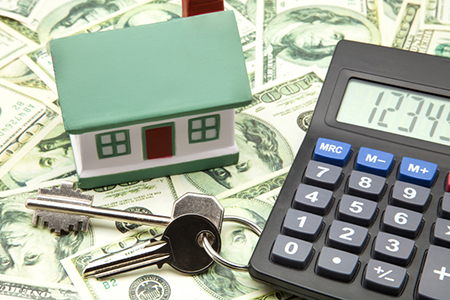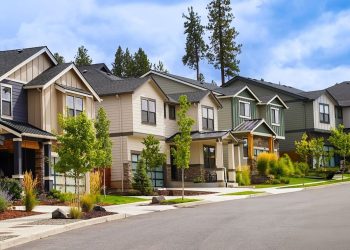 One million borrowers regained equity in 2015, bringing the total number of mortgaged residential properties with equity at the end of Q4 2015 to approximately 46.3 million, or 91.5 percent of all mortgaged properties, according to the new CoreLogic® analysis. Nationwide, borrower equity increased year over year by $682 billion in Q4 2015. The CoreLogic analysis also indicates approximately 120,000 properties lost equity in the fourth quarter of 2015 compared to the third quarter of 2015.
One million borrowers regained equity in 2015, bringing the total number of mortgaged residential properties with equity at the end of Q4 2015 to approximately 46.3 million, or 91.5 percent of all mortgaged properties, according to the new CoreLogic® analysis. Nationwide, borrower equity increased year over year by $682 billion in Q4 2015. The CoreLogic analysis also indicates approximately 120,000 properties lost equity in the fourth quarter of 2015 compared to the third quarter of 2015.
The total number of mortgaged residential properties with negative equity stood at 4.3 million, or 8.5 percent, in Q4 2015. This is an increase of 2.9 percent quarter over quarter from 4.2 million homes, or 8.3 percent, in Q3 201 and a decrease of 19.1 percent year over year from 5.3 million homes, or 10.7 percent, compared with Q4 2014.
Negative equity, often referred to as “underwater” or “upside down,” applies to borrowers who owe more on their mortgages than their homes are worth. Negative equity can occur because of a decline in home value, an increase in mortgage debt or a combination of both.
For the homes in negative equity status, the national aggregate value of negative equity was $311 billion at the end of Q4 2015, increasing approximately $5.5 billion, or 1.8 percent, from $305.5 billion in Q3 2015. On a year-over-year basis, the value of negative equity declined overall from $348 billion in Q4 2014, representing a decrease of 10.7 percent in 12 months.
Of the more than 50 million residential properties with a mortgage, approximately 9.5 million, or 18.9 percent, have less than 20 percent equity (referred to as “under-equitied”) and 1.2 million, or 2.3 percent, have less than 5 percent equity (referred to as near-negative equity).
Borrowers who are under-equitied may have a difficult time refinancing their existing homes or obtaining new financing to sell and buy another home due to underwriting constraints. Borrowers with near-negative equity are considered at risk of moving into negative equity if home prices fall.
“In Q4 of last year home equity increased by $680 billion or 11.5 percent, the 13th consecutive quarter of double digit growth,” says Frank Nothaft, chief economist for CoreLogic. “The improvement in equity reflects positive home prices and continued deleveraging of mortgage balances by households.”
“The number of homeowners with more than 20 percent equity is rising rapidly,” says Anand Nallathambi, president and CEO of CoreLogic. “Higher prices driven largely by tight supply are certainly a big reason for the rise, but continued population growth, household formation and ultralow interest rates are also factors. Looking ahead in 2016, we expect home equity levels to continue to build, which is a good thing for the long-term health of the U.S. economy.”
Nevada had the highest percentage of mortgaged residential properties in negative equity at 18.7 percent, followed by Florida (17.1 percent), Illinois (14.6 percent), Arizona (14 percent), and Rhode Island (13.5 percent). These top five states combined account for 30.8 percent of negative equity in the U.S., but only 16.5 percent of outstanding mortgages.
Texas had the highest percentage of mortgaged residential properties in positive equity at 98 percent, followed by Alaska (97.6 percent), Hawaii (97.6 percent), Montana (97.3 percent) and Colorado (97.1 percent).
Of the selected 10 metropolitan areas, Miami-Miami Beach-Kendall, Fla. had the highest percentage of mortgaged properties in negative equity at 22 percent, followed by Las Vegas-Henderson-Paradise, Nev. (21.3 percent), Chicago-Naperville-Arlington Heights, Ill. (16.7 percent), Washington-Arlington-Alexandria, D.C.-Va.-Md.-W.V. (11 percent) and Boston, Mass. (6.3 percent).
Of the same 10 metropolitan areas, San Francisco-Redwood City-South San Francisco, Calif. had the highest percentage of mortgaged properties in a positive equity position at 99.3 percent, followed by Houston-The Woodlands-Sugar Land, Texas (98.1 percent), Denver-Aurora-Lakewood, Colo. (98 percent), Los Angeles-Long Beach-Glendale, Calif. (95.5 percent) and New York-Jersey City-White Plains, N.Y.-N.J. (93.8 percent).
Of the total $311 billion in negative equity nationally, first liens without home equity loans accounted for $171 billion, or 55 percent, in aggregate negative equity, while first liens with home equity loans accounted for $140 billion, or 45 percent.
Approximately 2.6 million underwater borrowers hold first liens without home equity loans. The average mortgage balance for this group of borrowers is $240,000 and the average underwater amount is $65,000.
Approximately 1.7 million underwater borrowers hold both first and second liens. The average mortgage balance for this group of borrowers is $304,000 and the average underwater amount is $82,000.
The bulk of positive equity for mortgaged residential properties is concentrated at the high end of the housing market. For example, 95 percent of homes valued at $200,000 or more have equity compared with 87 percent of homes valued at less than $200,000.
For more information, visit www.corelogic.com.











